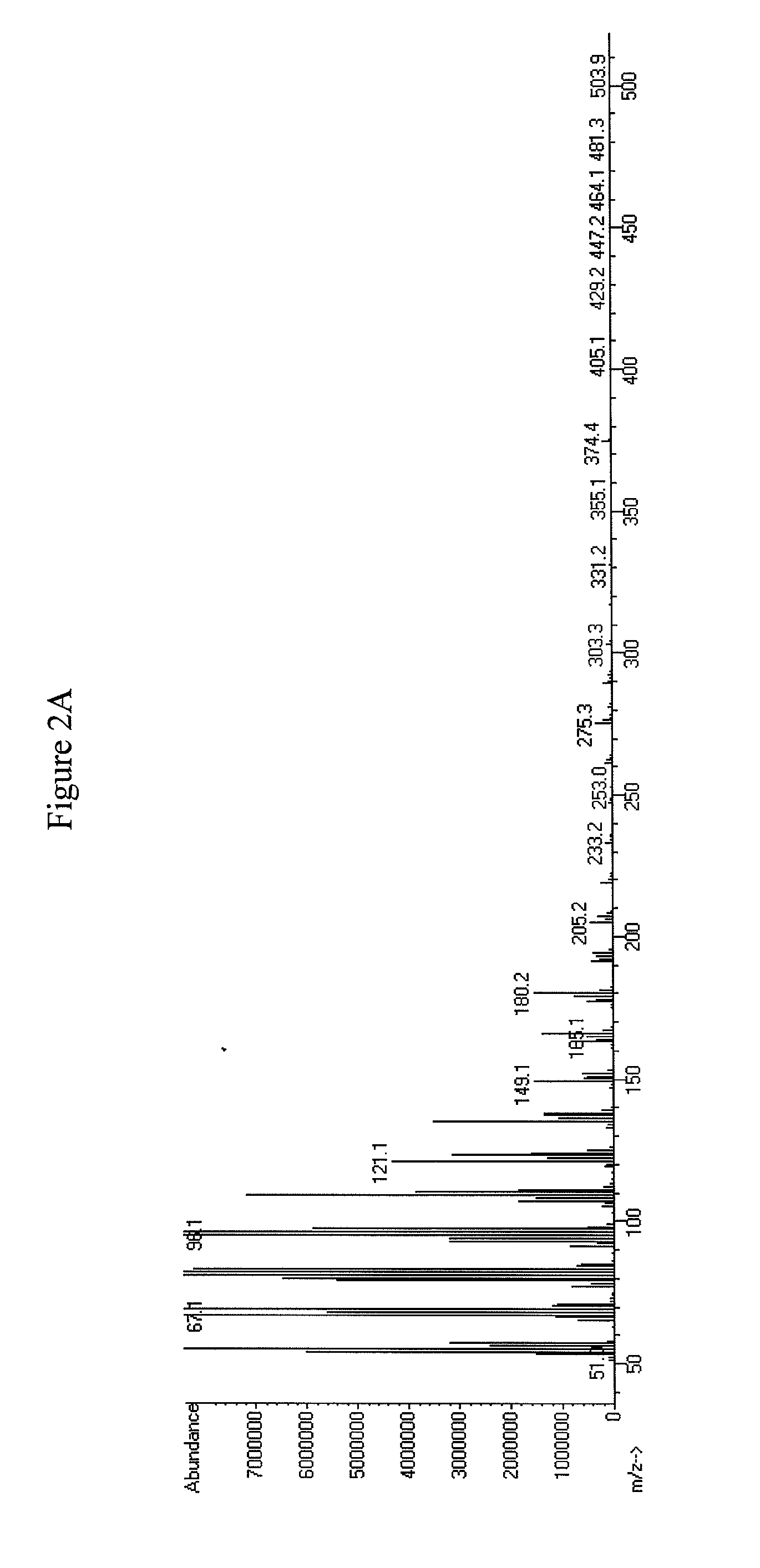Hydrocarbon-producing genes and methods of their use
a technology of hydrocarbon-producing genes and methods, applied in the field of hydrocarbon-producing genes, can solve the problems of increasing the difficulty of obtaining, the world's fuel demand will soon outweigh the current fuel supply, and the long time-consuming formation of tetradecanal, so as to reduce the level of 14-heptacosanone and enhance the formation of tetradecanal
- Summary
- Abstract
- Description
- Claims
- Application Information
AI Technical Summary
Benefits of technology
Problems solved by technology
Method used
Image
Examples
example 1
[0268]This example describes materials and methods used in carrying out the examples within this patent. Although particular methods are described, one of ordinary skill in the art will understand that other, similar methods also can be used. In general, standard laboratory practices were used, unless otherwise stipulated. For example, standard laboratory practices were used for: cloning; manipulation and sequencing of nucleic acids; purification and analysis of proteins; and other molecular biological and biochemical techniques. Such techniques are explained in detail in standard laboratory manuals, such as Sambrook et al., supra; and Ausubel et al., supra.
[0269]Genome Sequences: The complete genome sequence of Stenotrophomonas maltophilia is available to the public for two different strains. The complete genome sequence for S. maltophilia R551-3 can be found at http: / / genome.ornl.gov / microbial / smal / (last accessed on May 16, 2007). The complete genome sequence for S. maltophilia s...
example 2
[0322]This example demonstrates that expression of OleA, OleC, and OleD in bacteria results in the production of olefins.
[0323]oleA, oleC, and oleD nucleic acid sequences were amplified from S. maltophilia using PCR. These sequences were inserted into bacterial expression vectors using standard cloning techniques, as described in Example 1. The plasmids containing oleA, oleC, and oleD were then used to transform E. coli C41(DE3) ΔfadE. The resulting bacterial strain with the genotype E. coli C41(DE3) ΔfadE; pET-21b(+)_OleA, pCOLADuet-1_OleC, pCDFDuet-1_OleD was tested using the 5 mL fermentation protocol and extracted using extraction method 1. The extract was then analyzed by GC / MS using detection method 1, as described in Example 1, for the detection of hydrocarbons (e.g., olefins) and aliphatic ketones. The hydrocarbons observed by GC / MS were mono-, di-, and tri-unsaturated olefins that ranged in carbon chain length from C27 to C31 (see FIGS. 1 and 2A-J). This demonstrated that t...
example 3
[0341]This example demonstrates that the expression of oleA in bacteria resulted in the production of aliphatic ketones.
[0342]oleA was expressed in E. coli as described in Examples 1 and 2. The plasmid containing oleA was used to transform E. coli C41(DE3). The resulting bacterial strain with the genotype E. coli C41(DE3); pET-21b(+)_OleA was tested using the 5 mL fermentation protocol. Analysis for the production of aliphatic ketones and hydrocarbons (e.g., olefins) was conducted by using Extraction Method 1 followed by the GC / MS analysis, using Detection Method 1 as described in Example 1. The aliphatic ketones observed by GC / MS were saturated, mono-unsaturated, and di-unsaturated aliphatic ketones. The aliphatic ketones ranged in carbon chain length from C27 to C31 (see FIGS. 5A-C and 6A-H).
[0343]To demonstrate that the expression of oleA leads to the production of aliphatic ketones in a wide range of bacteria, plasmid pHT01_OleA was made for expression of oleA in Bacillus subtil...
PUM
| Property | Measurement | Unit |
|---|---|---|
| Fraction | aaaaa | aaaaa |
| Density | aaaaa | aaaaa |
| Chemical shift | aaaaa | aaaaa |
Abstract
Description
Claims
Application Information
 Login to View More
Login to View More - R&D
- Intellectual Property
- Life Sciences
- Materials
- Tech Scout
- Unparalleled Data Quality
- Higher Quality Content
- 60% Fewer Hallucinations
Browse by: Latest US Patents, China's latest patents, Technical Efficacy Thesaurus, Application Domain, Technology Topic, Popular Technical Reports.
© 2025 PatSnap. All rights reserved.Legal|Privacy policy|Modern Slavery Act Transparency Statement|Sitemap|About US| Contact US: help@patsnap.com



